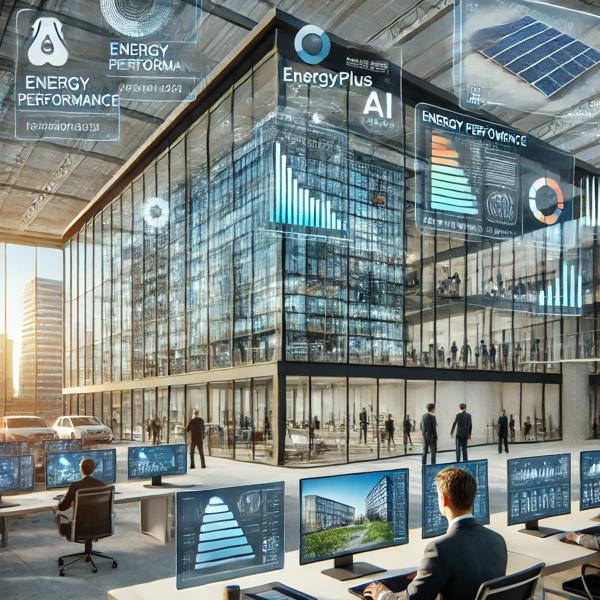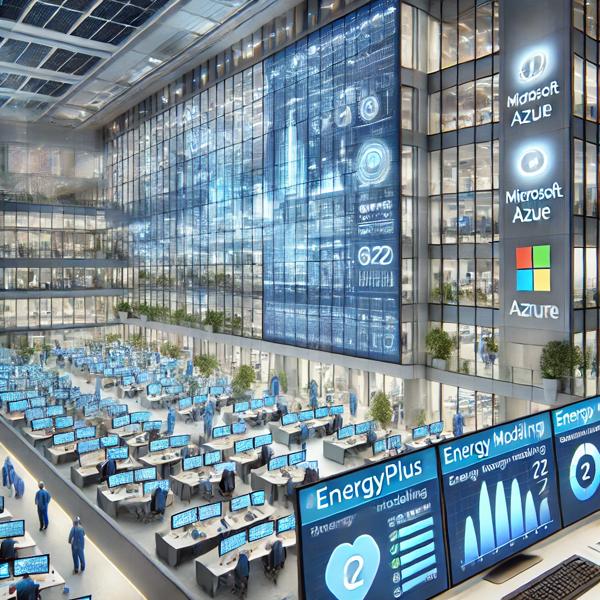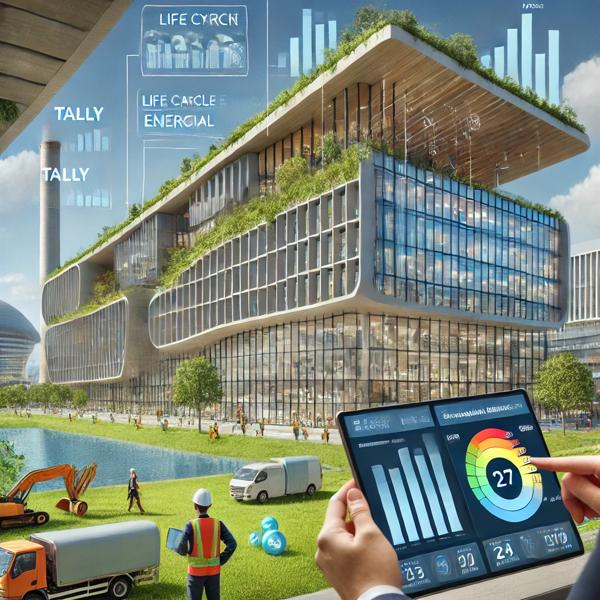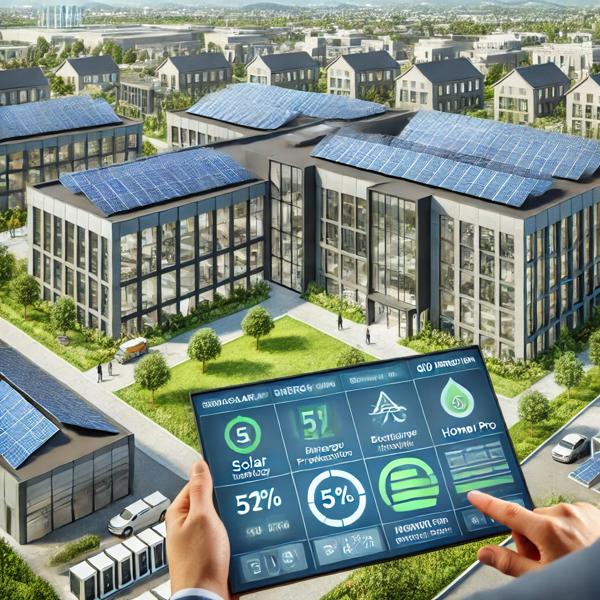5 BIG Energy Modeling trends for 2025
Top 5 Current Trends in Energy Modeling (With Case Studies)
Energy modeling is undergoing significant changes, driven by technological innovations, evolving codes, and a push for greener buildings. As we adapt, understanding these key trends can help us refine our practices and stay competitive. Below, we explore the top five current trends in energy modeling, each backed by a real-world case study for context.
1. Artificial Intelligence and Machine Learning Integration
Trend Overview: AI and machine learning are now key players in energy modeling, offering faster and more accurate energy consumption predictions. These tools analyze vast datasets and automate complex simulations, reducing manual iterations and accelerating the modeling process. The integration of AI allows for more predictive analytics, especially useful in large projects or urban planning.
Case Study 1: AI Integration/Calibration with EnergyPlus and TensorFlow:

A leading architecture firm in New York integrated EnergyPlus with TensorFlow, a popular machine learning framework, to predict energy consumption for a mixed-use high-rise development. By coupling TensorFlow’s AI capabilities with EnergyPlus's detailed simulation engine, the team could predict energy loads based on historical weather data, material properties, and occupancy patterns. The model delivered results within a 3% margin of error, significantly cutting down the time required for manual iterations. This hybrid approach reduced labor by 40% and allowed the project to be completed six weeks ahead of schedule. Moreover, this AI-augmented EnergyPlus model optimized the HVAC system design, delivering more precise control settings, which resulted in considerable energy savings during operation.
2. Real-Time Energy Modeling
Trend Overview: Energy modeling is shifting from a static design-phase tool to a dynamic process, with real-time energy models that adjust based on live data from smart meters and IoT sensors. This allows for ongoing building performance optimization and instant identification of energy inefficiencies.
Case Study 2: Real-Time Energy Modeling with EnergyPlus and Microsoft Azure Digital Twins:

A hospital in Seattle developed a real-time digital twin by integrating EnergyPlus with Microsoft Azure Digital Twins, a powerful IoT platform designed for dynamic system monitoring. This integration allowed the hospital’s building management system to send real-time data from thousands of IoT sensors, such as temperature, lighting, and occupancy, directly into EnergyPlus for continuous energy simulation.
The EnergyPlus-driven digital twin model enabled dynamic adjustments to the HVAC and lighting systems based on real-time occupancy and environmental conditions. During a critical period of high patient load, the system maintained optimal indoor air quality and comfort while reducing energy use by 15%. Additionally, the digital twin identified inefficiencies in energy consumption patterns, leading to targeted system improvements that resulted in an overall 10% reduction in the hospital’s annual energy costs.
This project showcased how the combination of EnergyPlus with Azure Digital Twins created a powerful, real-time energy modeling solution that continuously optimizes building performance and minimizes energy waste.
3. Whole-Building Life Cycle Assessments
Trend Overview: Traditional energy models typically focus on operational energy use. But life cycle assessments (LCAs) take it a step further, evaluating the energy consumed during the entire life of the building, from the manufacturing of materials to demolition. Incorporating LCAs into energy models provides a more holistic view of a building’s environmental impact.
Case Study 3: Revit combined with Cove.tool and Tally combined to calculate LCA with Embodied Energy

A university in Denmark undertook a new campus project using Cove.tool alongside the Tally plugin for a comprehensive life cycle assessment approach. The energy model in Cove.tool focused on operational energy use, while Tally calculated the embodied energy of construction materials throughout the building’s lifecycle. This included not only the energy used in material production but also projected energy for demolition and recycling at the end of the building’s life. By leveraging Tally to select materials with lower embodied energy and Cove.tool to model optimized energy performance strategies, the project is expected to reduce total energy consumption by 25% compared to traditional methods. This integrated approach has set a new standard for sustainable campus developments across Europe.
4. Integration of Renewables and Energy Storage
Trend Overview: With renewable energy sources like solar and wind becoming mainstream, energy models now need to account for their integration along with energy storage solutions. Modeling how a building will interact with on-site generation and storage systems is key to optimizing performance and ensuring buildings remain net-zero or net-positive in energy consumption.
Case Study 4 Net-Zero Energy Corporate Office Park using eQUEST and HOMER Pro:

A corporate office park in California pursued a net-zero energy goal by integrating on-site solar panels and battery storage. The energy modeling team used eQUEST to simulate the building’s overall energy consumption, HVAC loads, and lighting systems. For modeling the renewable energy generation and battery storage system, they used HOMER Pro, a software specialized in optimizing distributed energy resources and microgrids.
By combining eQUEST for the building's energy consumption and system performance with HOMER Pro for renewable energy generation and battery storage, the team was able to simulate the interaction between solar power, battery storage, and grid dependence. The model helped identify the optimal battery size and storage capacity needed to maximize self-consumption and minimize reliance on the grid, especially during peak hours.
After one year of operation, the building achieved 95% grid independence during peak demand, with excess energy from solar panels being stored in the battery and sold back to the grid. This integration of eQUEST with HOMER Pro enabled the office park to reach its net-zero energy goal efficiently, with future plans to replicate the strategy in additional buildings across the campus.
5. Compliance with Stricter Energy Codes and Standards
Trend Overview: As global awareness of climate change grows, energy codes and standards are becoming more stringent. Energy modeling is now critical in demonstrating compliance with these updated regulations, particularly for programs like LEED, ASHRAE 90.1, and others. This means modelers need to stay updated on evolving standards and integrate them into simulations to ensure compliance.
Case Study 5: Energy Simulation for Mixed-Use Development with OpenStudio and ASHRAE 90.1-2019:

A mixed-use development in Chicago needed to meet the latest requirements of ASHRAE 90.1-2019, which sets higher standards for building energy efficiency, particularly in lighting, HVAC, and building envelope performance. The energy modeling team used OpenStudio, an open-source platform built on top of EnergyPlus, to simulate the building’s energy performance in detail.
Through the use of OpenStudio, the team performed iterative simulations, focusing on key aspects of the building's performance, including HVAC efficiency, Low-E high-performance glazing, and advanced lighting controls. The team used a publicly available OpenStudio Measure to generate the ASHRAE 90.1-2019 Proposed and Baseline Buildings. This allowed the team to model and compare different energy conservation measures (ECMs) and identify the most cost-effective strategies for exceeding compliance thresholds.
By optimizing insulation, upgrading to high-efficiency windows, and implementing demand-controlled ventilation, the final design exceeded the ASHRAE 90.1-2019 requirements by 18%. This level of performance not only met the local green building code but also earned the project LEED Gold certification. OpenStudio’s robust integration with the ASHRAE 90.1-2019 standards played a critical role in achieving these results, demonstrating the value of advanced energy modeling for meeting stricter energy codes.
Conclusion
As energy modeling continues to evolve, embracing these trends is not optional—it’s necessary to stay competitive. AI and machine learning are making models more predictive, real-time data is refining operational efficiency, and full life cycle assessments are helping us think long-term. At the same time, the integration of renewables and compliance with stricter codes ensures that we’re not just meeting today’s standards but building for the future. Each of these case studies demonstrates the value of staying current with these trends, and how they can drive better, more efficient designs. Whether you’re working on optimizing geothermal systems or helping buildings meet the latest energy codes, understanding these trends will keep you ahead of the curve.
